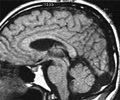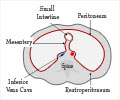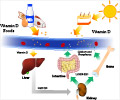The findings of a recent animal study have revealed that synthetic vitamin D is effective in preventing the progress of liver fibrosis.

The star-shaped "stellate" cells in the liver upon activation produce collagen and result in fibrosis. Researchers initially found high levels of vitamin D receptor (VDR) in the stellate cell and the genome responsible for activation of fibrosis.
"Preclinical results suggest the 'vitamin D brake' is highly efficacious and led us to believe that the time is right to consider a trial in the context of chronic liver disease," says Ronald M. Evans, lead researcher and professor in Salk's Gene Expression Laboratory.
In their experiment, scientists found that calcipotriol had a positive effect in controlling the initiation of fibrosis in mouse liver. Authors consider this as a promising and safe strategy in treating fibrosis. Currently there is no treatment to stop the progress of fibrosis.
"Because there are currently no effective drugs for liver fibrosis, we believe our findings would open a new door for treatment," says Evans.
Researchers preferred synthetic vitamin D to natural vitamin D due to the facts that natural vitamin D degrades very quickly and they may increase blood calcium levels, which in turn may lead to nausea and vomiting, frequent urination, muscle weakness, joint aches and pain. Synthetic vitamin D, on the other hand, provides a strong response without increasing calcium levels in the blood.
The findings are published in the journal Cell.














